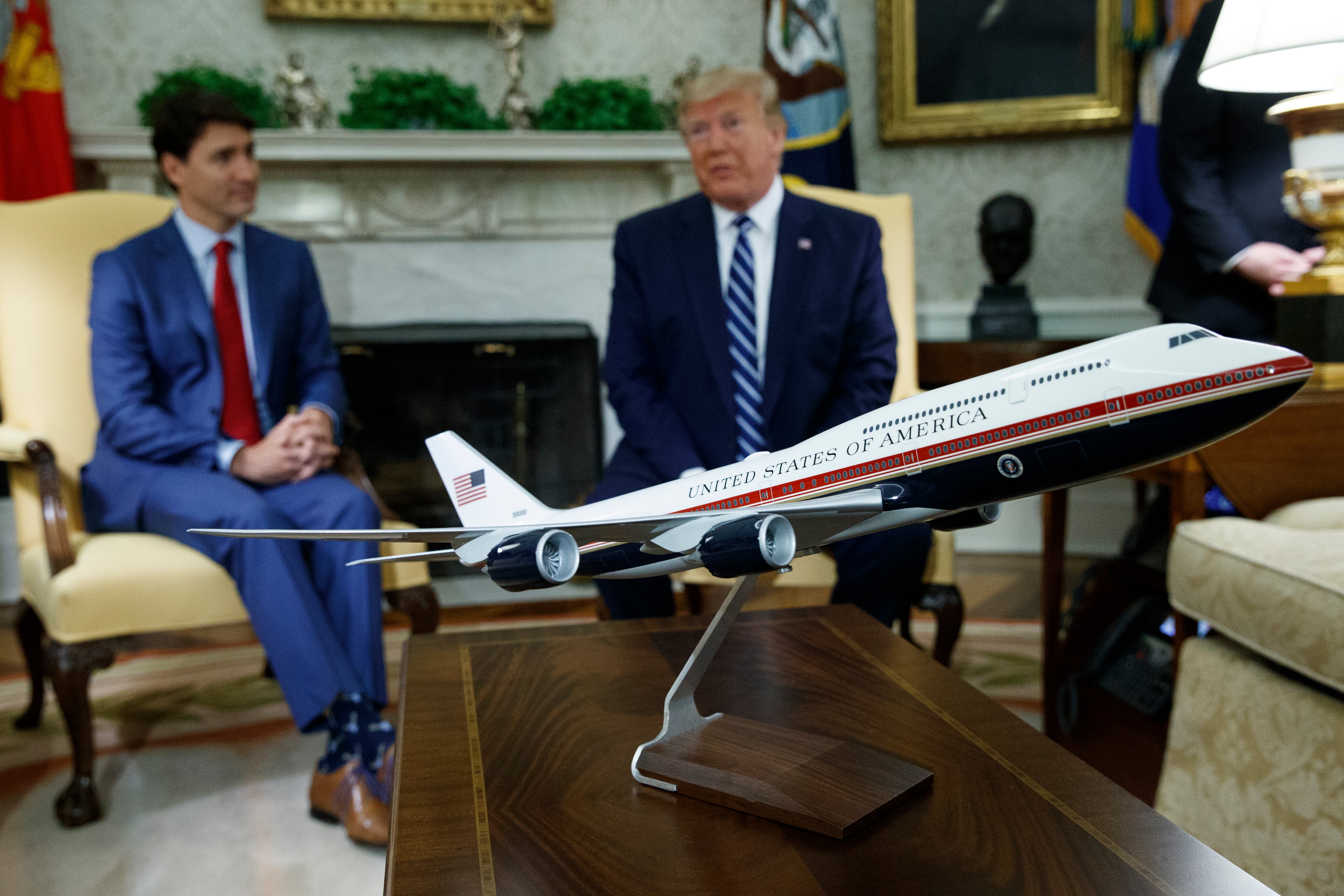WASHINGTON — One of the first queries posed to President Joe Biden’s new administration was whether the president would seek to undo a controversial change to the iconic Air Force One paint scheme proposed by his predecessor, Donald Trump.
For now, it’s a question that the White House has no intention of answering.
“I can confirm for you here the president has not spent a moment thinking about the color scheme of Air Force One,” White House Press Secretary Jen Psaki told reporters during a press conference Friday. Psaki was first asked about the Air Force One’s paint scheme shortly after Biden’s inauguration on Jan. 20.
Biden’s ambivalence about the redesign of Air Force One is a sharp contrast to Trump, who made himself a notoriously visible character in the saga of the Air Force’s presidential aircraft recapitalization program.
After his election in 2016, Trump called for the program to be canceled due to high costs. He softened after meetings with Boeing executives, and in 2018 announced that the two new VC-25Bs — designated Air Force One when carrying the president — would be painted red, white and blue instead of the iconic blue and white scheme chosen by former First Lady Jacqueline Kennedy in the 1960s.
“I said, ‘I wonder if we should use the same baby blue colors?’ And we’re not,” Trump said during a 2018 interview on CBS News. “It’s going to be the top of the line, the top in the world. And it’s going to be red, white and blue, which I think is appropriate.”
So far, the Biden administration has not directed the Air Force to explore alternative livery designs for the new Air Force One planes, nor have officials indicated a plan to revert back to the Kennedy-era paint scheme, an Air Force spokeswoman said in response to questions from Defense News.
However, that’s also not a decision the Biden administration will have to make in the immediate future.
Aircraft paint and interiors are included within the $3.9 billion firm, fixed-price contract that Boeing and the Air Force agreed to in July 2018, the Air Force stated. Every year, a portion of that funding is doled out to Boeing as it makes progress on the development and build of the two VC-25Bs.
Boeing is still in the process of making major hardware modifications to the two Boeing 747-8 airliners that will become VC-25Bs — including adding power upgrades, a medical facility, and various other classified technologies needed to transform a commercial plane into a flying fortress.
The new Air Force One planes aren’t slated to be ready for operations until 2024. That gives the new administration time to determine a final paint scheme for the VC-25B and deliver its decision to Boeing, which will then begin painting the aircraft.
“The Air Force coordinates appearance options for VC-25B external paint livery and interiors with the White House Military Office. The Air Force will not speculate on VC-25B decisions to be made by the new administration or potential costs associated with unknown future decisions,” a service spokeswoman said, adding that “the Air Force is prepared for discussions with the new administration about the VC-25B program.”
Another source with knowledge of the program clarified further that the paint for the plane has not been ordered, as the Air Force has not provided contractual guidance to Boeing on a final livery design.
During a roundtable with reporters Jan. 19, Ellen Lord, who served as the Pentagon’s top acquisition official during the Trump administration, downplayed the impact Trump had on the Air Force One replacement program.
“The president had a lot of interest on a few programs. I don’t think he influenced the programmatics,” Lord said. “What he was interested in was the presidential aircraft. I was in the Oval for a meeting on that. But he, frankly, was focused on performance and the look of the aircraft, the color scheme and so forth.”
The Air Force estimates that it will spend a total of $5.3 billion on the Air Force One replacement program. That sum includes government testing, training, initial spares and military construction activities that were not baked into the $3.9 billion contract with Boeing for the two new aircraft.
By the end of fiscal year 2021, the service will have obligated $3.81 billion on the program.
Valerie Insinna is Defense News' air warfare reporter. She previously worked the Navy/congressional beats for Defense Daily, which followed almost three years as a staff writer for National Defense Magazine. Prior to that, she worked as an editorial assistant for the Tokyo Shimbun’s Washington bureau.





